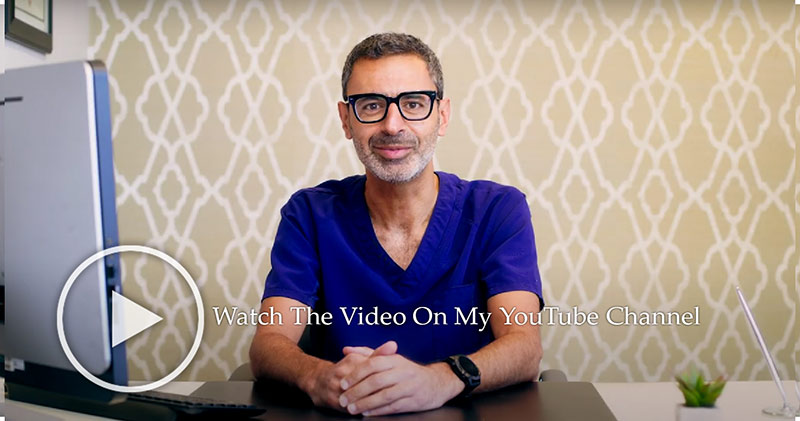Gynecomastia Revision Surgery: Tackling Under-Resection
Posted by Dr. Dadvand July 12, 2024
This is a case study of a patient who traveled from the Midwest to see me, after having his initial surgery on the East Coast about five years ago. He was unhappy with the results because not enough tissue was removed during his first procedure, which involved only excision and no liposuction. It is a fascinating gynecomastia revision case that highlights the intricacies and challenges of addressing under-resection from previous surgery.
Two Main Scenarios in Gynecomastia Surgery Revision
- Patients who have been over-resected
- Patients who have been under-resected
Both present their own unique set of challenges. In this particular case, the patient was under-resected. When I examined him, it was clear that the previous surgeon had removed some tissue in certain areas but left too much in others. The result? An uneven contour that did not meet the patient’s expectations.
The Pre-Op Assessment and the Pinch Test
Before heading into the operating room, I carefully marked the areas of concern. If you’ve seen my previous videos, you know I’m meticulous about this step. By pinching and identifying all the borders of the breast tissue, I usually end up with an oval-shaped marking. However, in this case, especially on the left side, it looked more like a kidney bean. This irregular shape was due to the incomplete tissue removal by the prior surgeon.
One key technique I use is the pinch test. By pinching the tissue, I can assess its thickness and ensure a uniform result. In this patient, the pinch test revealed that some areas were significantly thicker than others. For instance, near his nipple, the tissue was already quite thin, meaning I had to be cautious to avoid creating a cratered appearance. These nuances make revision surgeries particularly challenging, as they often require a balance between removing enough tissue to improve the contour without over-resecting.
Addressing Complications and Strategy
Another complication in this case was a seroma (fluid collection) from the previous surgery, which increased the risk of scar tissue formation. This meant I had to be extra vigilant about differentiating between glandular tissue and scar tissue. I planned to make a small incision and carefully deconstruct the chest to remove the necessary tissue while ensuring a balanced and natural result.
Once in the operating room, I freed up the tissue from the pectoral muscle, making sure to address the specific problem areas. The tissue I removed was a combination of glandular and scar tissue, which required a delicate and strategic approach to achieve the desired contour.
Interestingly, I observed that his areola tended to crater when pushed in, especially on one side. To address this, I performed a repair underneath to provide additional support. This step was crucial to ensure that post-surgery, his areola would spring back naturally without any sinking.
Final Results and Reflection
After completing the excision and contouring, I was pleased with the results. The lower fullness of his pecs was reduced, and the overall definition of his chest was significantly improved. The pinch test confirmed that the tissue thickness was now consistent across the treated areas. By focusing on the lower part of the chest and avoiding unnecessary tissue removal under the areola, I was able to achieve a more masculine and aesthetically pleasing contour.
As always, seeing the results and knowing the positive impact it will have on my patient’s confidence and quality of life is incredibly rewarding. Gynecomastia surgery revision is complex, but with careful planning, precise execution, and a deep understanding of each patient’s unique anatomy, we can achieve excellent results.
I’m Dr. Babak Dadvand, double board-certified and serving patients throughout Beverly Hills and LA. Contact my office for a gynecomastia consultation if you have any concerns about the appearance of your chest.
You can also view more about this case study on my YouTube channel here.


